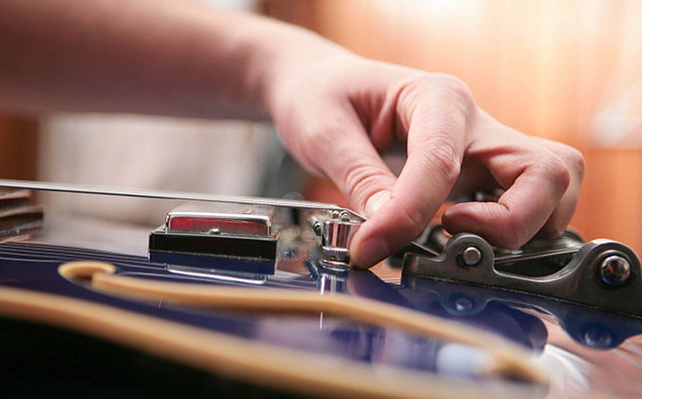Regular maintenance of your acoustic guitar is essential to keep it in shape and make sure it serves as your reliable companion through many hours of practice and years of play. It also lets you check for any parts that need to be replaced or fixed professionally.
Even guitars that are designed to be sturdy and easy to play, like the Fender CD-140SCE electro-acoustic, may deteriorate if not properly cared for. This is true for all guitars regardless of make and model, really. As with cars, preventive maintenance is key to making sure your guitar looks, feels and plays like new.
Follow these guitar care tips to keep your instrument in top playing condition.
Keep the guitar in its case when not in use.
Cases or gig bags aren’t just for carrying guitars. If you’re not going to be using your guitar, it’s best to put it in its case to prevent it from falling, getting spilled on, being exposed to the sun and other things that can damage it, such as changes in humidity and temperature.
If you are playing your guitar regularly and find it a chore to take your guitar out of its case and put it back every time, use a guitar stand or a wall hook to keep the guitar accessible.
Wipe the guitar after each playing session.
The steel strings on an acoustic guitar can corrode when moisture – particularly the sweat from your fingers – is left on it. Corrosion wears out the strings prematurely, requiring a replacement much sooner than necessary. To keep your strings corrosion-free and in good condition, wipe them dry after you play.
Wipe the rest of the guitar as well to remove oil, sweat and dead skin cells. Use a clean, dry and soft cloth to wipe the strings and body of the guitar down. There are soft polishing cloths designed specifically for guitars but an old cotton shirt will do. The more washings the shirt has gone through, the better because that means most of the lint is now gone. Avoid using paper towels because these can leave scratches on the finish of the guitar.
Clean the fingerboard carefully.
The fingerboard of your guitar can accumulate grime that may be difficult to remove by just wiping with a dry cloth. You can use cleaning solutions specifically for guitar fingerboards to remove the grime. Frets can also be polished using special polishing paper.
The fingerboard also needs to be “fed” periodically to keep it from drying out too much. A dab or mineral or lemon oil, rubbed into the fingerboard wood using a soft cloth, will do just the trick. There are also different kinds of fingerboard conditioning products available – read the instructions carefully before using them. Application of oil doesn’t have to be done monthly or even yearly if the guitar is new.
When doing maintenance work on your guitar, check it for damage such as separated joints, cracks, hard-to-remove stains on the finish, faulty tuning machines, a misaligned neck and other issues. If you see signs of damage, consult a professional guitar technician or luthier to address the problem immediately before it gets worse.

Leave a Reply